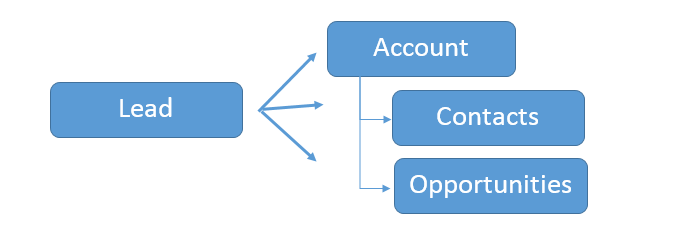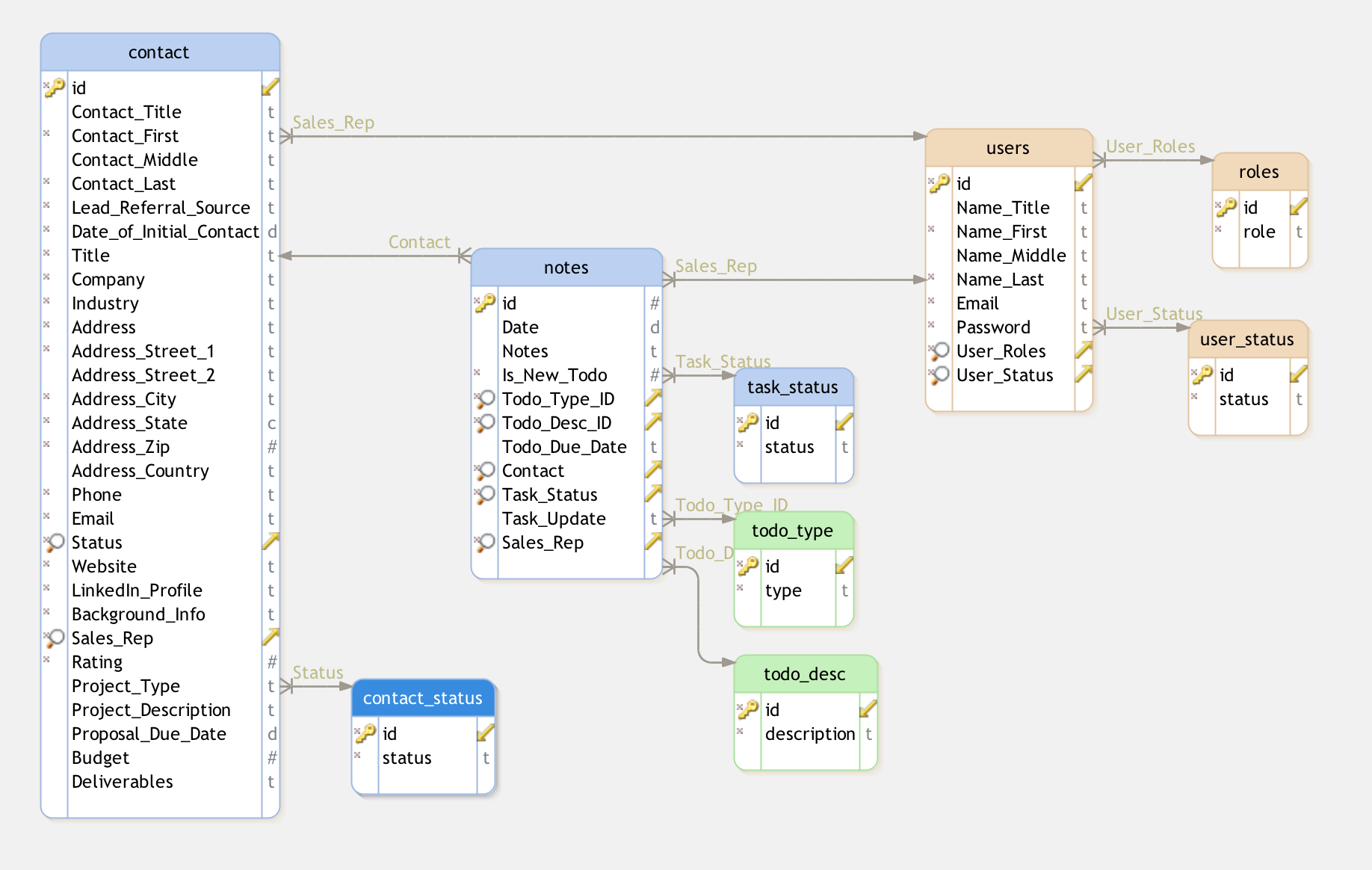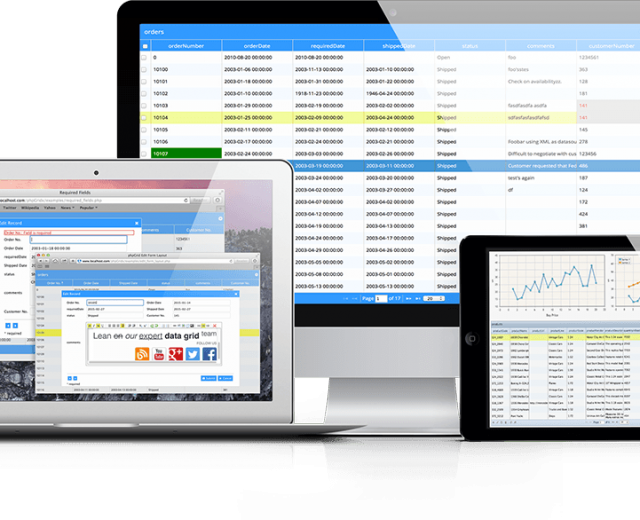Building Blocks of a CRM
Here is a list of the essential components of the CRM:
- Leads: initial contacts
- Accounts: Information about the companies you do business with
- Contact: Information about the people you know and work with. Usually, one account has many contacts
- Opportunities: Qualified leads
- Activities: Tasks, meetings, phone calls, emails and any other activities that allow you to interact with customers
- Sales: Your sales team
- Dashboard: CRM dashboards are much more than just eye candy. They should deliver key information at a glance and provide links to drill down for more details.
- Login: Salespeople and managers have different roles in the system. Managers have access to reports and sales pipeline information.

Create CRM Database
A database schema is the structure that represents the logical view (tables, views, primary and foreign keys) of the entire database. A database schema includes entities and the relationship among them.
It is a good practice to have one primary key for each table in a relational database. A primary key is a unique identifier for each record. It can be the social security number (SSN), vehicle identification number (VIN), or simply auto-increment number (a unique number that is generated when a new record is inserted into a table).
Below is the database diagram of our simple CRM. The key symbol in each table represents the table primary key. The magnifying glass indicates foreign key linking another table in the database. Sometimes we call it the “lookup” table.

Check out complete tutorial
Work better together


